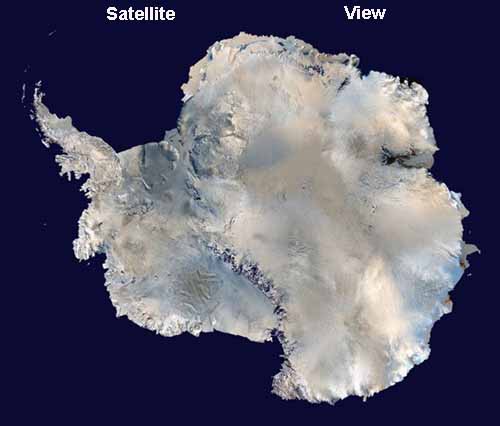
New Ice Core Reveals 800,000 Years of Climate History
Kate Ravilious
for National Geographic News
July 5, 2007
Earth's polar temperature has swung wildly—by as much as 15 degrees Celsius (59 degrees Fahrenheit)—over the last 800,000 years, an Antarctic ice core has revealed.
In 2004 scientists led by Jean Jouzel of the Laboratory of Climate and Environmental Sciences (LSCE) in Gif-sur-Yvette, France, pulled up the final chunk of ice core from a drill hole in the center of Antarctica.
At 3,260 meters (10,695 feet) long, drilling the ice core was a marathon effort in one of the most hostile and remote places on Earth. (See Antarctica map.)
Although it is not the deepest Antarctic core (the 3,263-meter [10,705-foot] Vostok core holds this record), its compressed ice does provide the longest polar climate record, going back 800,000 years.
Tracing the Temps
Measuring deuterium, a form of the element hydrogen, enabled the team to piece together the temperature record in the ancient ice.
The new climate record covers an additional cycle of glacial change, amounting to 11 cycles in total, lead author Jouzel said.
Plugging the data from the entire core into an atmospheric model, the scientists were able to reconstruct a reliable temperature record for the past 800,000 years.
In today's online journal Science, the team showed that the coldest period occurred around 20,000 years ago, during the last glacial maximum, when the ice sheets were at their peak.
It was about 10 degrees Celsius (50 degrees Fahrenheit) colder than today. (Related: "Antarctica's Atmosphere Warming Dramatically, Study Finds" [March 30, 2006].)
Meanwhile, the warmest period was during the last interglacial period, which is an interval of warmer global average temperature that separates ice ages. At that time, around 130,000 years ago, it was a balmy 4.5 degrees Celsius (8.1 degrees Fahrenheit) warmer than today.
Global Events
Many of the changes seen in the core were global climate events.
"We were able to correlate the record with changes seen in Greenland," study lead author Jouzel said. (Related: " Climate-Change Forecast? Ask the Antarctic Ice" [November 10, 2004].)
The scientists plan to drill even deeper, hoping to push the Antarctic climate record back to one million years.
"We are now turning toward other regions of Antarctica, where snow accumulation is even lower," Jouzel said.
But some are skeptical that the ancient ice will have a tale to tell.
"We're getting to a limit on how far ice cores can take us back," said Martin Siegert, a glaciologist at Edinburgh University.
"There may be ice at one million years old, but will there be a real record in it?"
Instead he suggests that sub-glacial lakes are likely to hold the key.
"The lake-floor record starts where the ice core record finishes. It is time to look beneath the ice," he said.
1 comment:
While it's true that a temperature of 10 degrees C is roughly equal to 50 degrees F, a difference of 10 degrees C is a difference of 18 degrees F.
Post a Comment